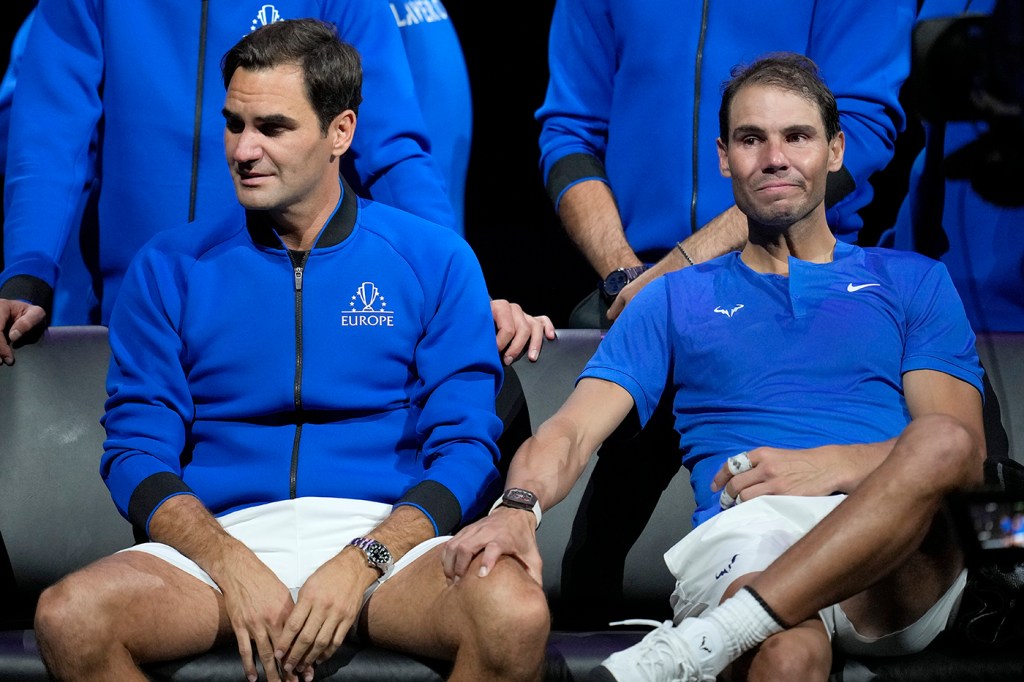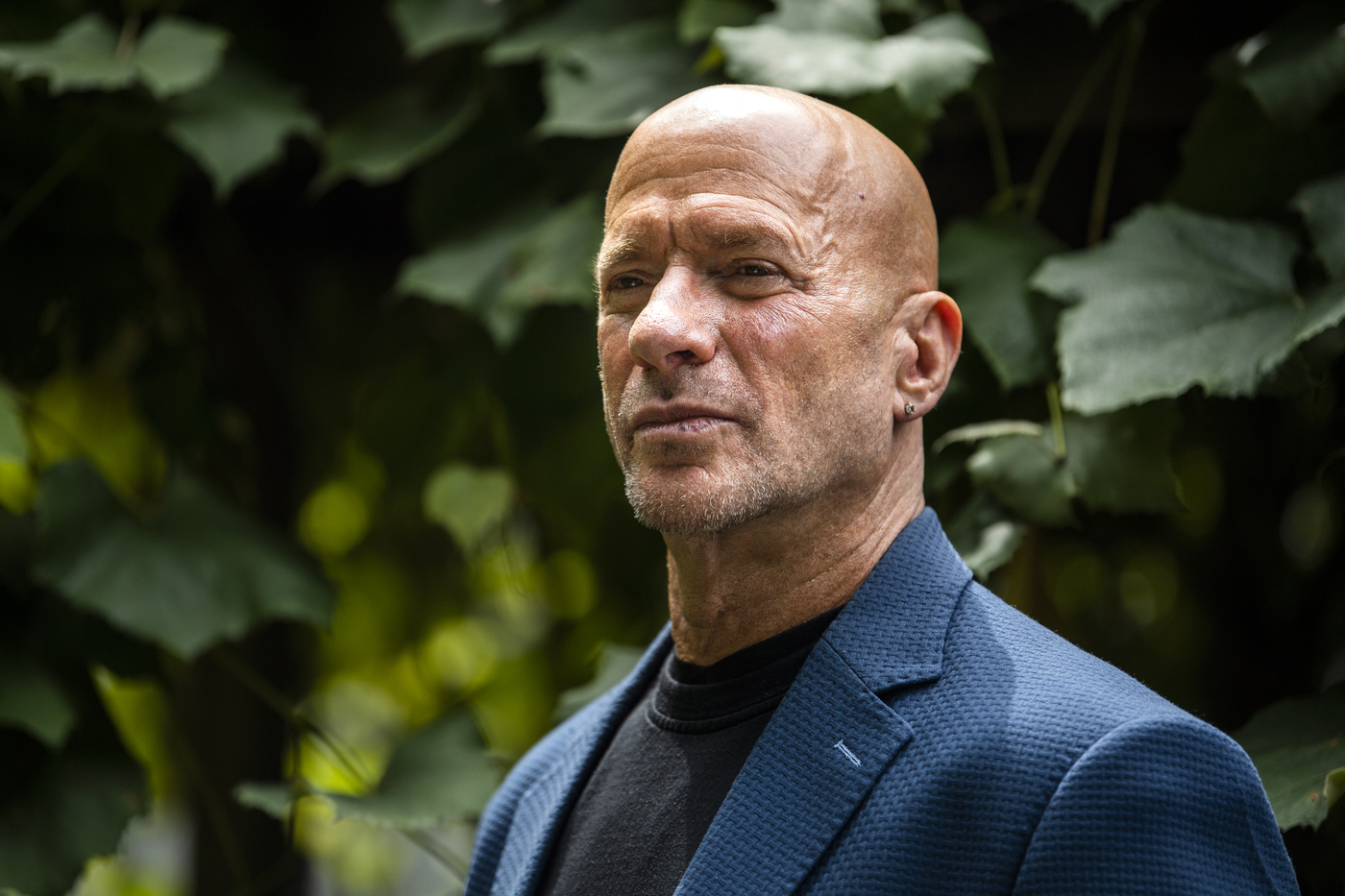Iconic Roger Federer photograph has many talking about how ‘masculinity and manhood’ are portrayed in sport

The iconography of men’s sport turns on displays of triumph and dominance.
Tiger Woods fist pumping after sinking a birdie putt. Muhammad Ali standing menacingly over a fallen George Foreman. Michael Jordan, tongue out, defying gravity as he scales air and bodies to dunk the basketball—an image that, years later, would become the source of the “Jumpman” logo.
Now, you can add another timeless sporting moment to that list—but one that stands in stark contrast to the rest.
Instead of depictions of athleticism and feats of sporting conquest in the usual victory-pose-over-fallen-opponent frame, here’s a new tilt: 20-time Grand Slam champion and tennis icon Roger Federer, a transcendent force in men’s tennis and a fixture on television screens and the ATP Tour for decades, weeping and holding hands with his long-time rival Rafael Nadal, also in bits following the pair’s doubles loss at the Laver Cup in London.

The image, captured by a freelance photographer on the evening of Federer’s final professional match on Sept. 23, circulated widely on social media. Users, journalists and sporting commentators were quick to embrace the photo—not least because it signaled an end of an era; but also because hand-holding among elite male athletes—particularly among two of the game’s GOATs (greatest of all time), who for years contested finals against each and “fought” to stay atop the tennis rankings—is an unusual sight.
However unusual, the photo sparked the imagination of a broad category of the public, starved of very public examples of notable men expressing affection and friendship in ways that challenge prevailing norms around masculine behavior, and the way boys are socialized into sport, Northeastern sporting observers say.
The photograph’s power lies not just in its portrayal of male emotion—athletes are often coached to be stoic and told to “keep their emotions in check”—but in the way that it confronts “hypermasculine” constructs in sport, says Daniel Lebowitz, executive director of the Center for the Study of Sport in Society at Northeastern.
“It really hits at the intersection of affection and emotion,” he says.
“In his very personage and actions, Federer is monument to, and a model exemplar of, a new construct of masculinity and manhood,” Lebowitz says.
The photographer, Ella Ling, herself, speaking to CNN’s Ron Riddle, described the moment as “incredible,” and suggested that “it could do a lot of good for society.” After first sharing the photograph publicly on Twitter, she said she’d “never seen anything like that”—referring, it appears, to the tearful scenes during Federer’s goodbye—“in tennis and never will again.”
Scores of Twitter users saw the emotional scenes as an antidote to “toxic masculinity.”
“In the often toxic masculinity of sports, *THIS* should be the next Sports Illustrated cover. Two fierce rivals, GOATS, holding hands & crying as one retires,” one Twitter user wrote, “… @RafaelNadal and @rogerfederer are standard bearers for honest masculinity and sports greatness.”
Lebowitz says that, within the context of sport, athletes’ performance is rewarded and celebrated more often when it’s combined with “dominance and the exhibition of power over others.”
“In male sports, hypermasculinity is when the goal of dominance somewhat outweighs the goal of just winning—and we often celebrate that,” Lebowitz says. “The problem is how do you stop that from seeping into the general culture? This photo provides a counterpoint to how sports, and male performance, are generally perceived in this way.”
Lisa Markland, associate athletic director for leadership, diversity, equity and inclusion at Northeastern, says she wishes to see more of the behavior displayed by Federer, 41, and Nadal, 36, from top male athletes.
“When I see this photo, I actually see two men in a sense just being caring toward one another, having emotions and expressing them,” Markland says. “But it doesn’t fit how men are taught to express themselves, often through aggression in sports.”
Much has been written about Federer’s sterling tennis career—his 20 Grand Slam titles (a record prior to 2020), the litany of records he’s accumulated over the course of a 24-year career. But equal to, or perhaps greater than, his achievements on the court are the plaudits he’s enjoyed outside of tennis—in his charitable work, his business ventures and in his dealings with people.
“His athletic dominance does not supersede his conviction, nor his commitment, to be kind, caring, compassionate, humble, and ever-inclusive,” Lebowitz says. “He … stands as both a blueprint, and a reminder for us all, for what non-toxic humanity is at its best.”
Federer in an interview with The New York Times, was asked about the photo with Nadal, whom he played 40 times over the course of his career, including over a dozen times at the semifinal or final stage at the Grand Slams.
“I think at one point, I was sobbing so hard, and I don’t know, everything was going through my mind about how happy I am to actually experience this moment right there with everybody,” he said. “I guess at one point, just because obviously I couldn’t speak and the music was there, I guess I just touched him, and I guess it’s maybe a secret thank you.”
The pair began playing doubles at the tail-end of their careers during the Laver Cup, a team event co-created by Federer himself.
For media inquiries, please contact media@northeastern.edu.






